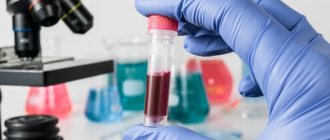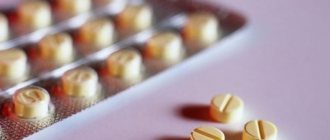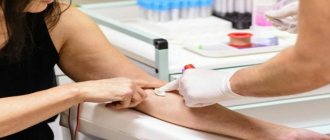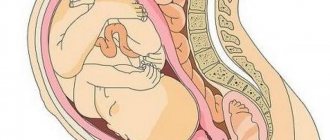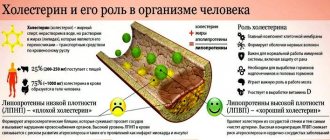How to test for 17-oh progesterone
In women, given the widely varying results during the cycle, blood is taken for testing in its first phase, three to five days after the start of menstruation. Children and men can be tested any day.
To avoid the possibility that progesterone was artificially lowered or increased, which nullifies the entire value of the study, it is necessary to donate blood on an empty stomach, in the morning, without significant food loads the day before. In addition, some time before the study, you should stop taking hormonal medications (corticosteroids, contraceptives), with the permission of your doctor.
Preparation for the analysis and results depending on the deadline
To obtain reliable results, it is necessary to take the test in the same laboratory several times. Blood for this hormone is taken on an empty stomach during pregnancy. You should not eat food 8 hours before the test. You can only drink clean water, other drinks (tea, coffee, juices) are excluded.
The following hormone levels in the blood are considered normal:
- From the 1st to the 6th week of pregnancy – no more than 10 nmol/liter;
- From the 7th to the 14th week – up to 17 nmol/liter;
- From the 15th to the 24th week – up to 20 nmol/liter;
- From 25 to 33 weeks – up to 28 nmol/liter;
- From 35 to 40 weeks – up to 34 nmol/liter.
When 17 is elevated it is progesterone
17 he progesterone can be exceeded in the following cases:
• Tumors of the adrenal glands;
• Increased 17 progesterone also occurs with neoplasms in the ovaries;
• Hyperplasia of adrenal tissue associated with congenital deficiency of enzymes 11 b-hydroxylase or 21-hydroxylase;
• Taking drugs containing progesterone, for example, contraceptives, also leads to the fact that progesterone remains elevated in the blood for some time.
Also, 17 OH progesterone is often elevated relative to the norm during pregnancy.
Norm
To determine the correct steroid value, it is necessary to take into account the woman’s gender and age.
In 1st trimester
17-OH is measured during pregnancy by week:
- 5-6 - 18.57 OH;
- 7-8 - 32.98 OH;
- 11-12 - 42.80 OH.
The 17-OH norm should not fluctuate; it increases relative to the duration of pregnancy. Low amount of steroid leads to miscarriage. Excess of the hormone causes deformities in the fetus.
In the 2nd trimester
In the 2nd trimester, the endogenous steroid rate is 71.6-303.2 nmol/l. Pregnancy progresses differently for every woman. However, the threat of losing the baby may arise from 13 to 24 weeks, as the level of OH progesterone increases. To save the child, the patient is undergoing treatment. The amount of 17-OH at week 24 is 2.0-5.0 ng/ml.
17-OH is a chemical compound produced by placental tissues during metabolic processes. The study of the intermediate product of cortisol synthesis is carried out using the ELISA method using reagents.
When a child is lost, the amount of endogenous steroid decreases. If tests show a decrease in the amount of the hormone, a miscarriage may occur.
In the 3rd trimester
Before birth at 33-34 weeks, 17-OH is 112.45, then it rises to 219.58 units. During pregnancy, the progestogen sex hormone relaxes the muscles of the uterus. In a patient with a threatened miscarriage, tests for 17-OH make it possible to adjust therapy.
Drugs used from 14 to 24 weeks when the endogenous steroid deviates from the norm cannot be taken in the 3rd trimester.
The use of drugs that affect the amount of sex hormone can cause premature birth.
Important information: Indicators of hCG tumor markers in oncology
In the 3rd trimester, deviation from the norm is dangerous; An excess of the steroid is especially unfavorable.
When is 17-oh progesterone low?
In several cases, 17-oh progesterone may decrease. Low levels of the hormone are a sign of Addison's disease, as well as deficiency of the enzyme 17a-hydroxylase, which causes pseudohermaphroditism in men.
If there are problems in gynecology, a test for 17 oh progesterone and a free or paid consultation with an endocrinologist is a necessary step for further examination.
In Lab4U you can do detailed tests for hormones, including 17-oh progesterone, and get a guaranteed accurate result, which will serve as the basis for further successful treatment.
Increased hormone levels during pregnancy
During this period, complex hormonal changes occur in the woman’s body. Only the optimal ratio of various hormones can ensure its normal course. An increase in the amount of 17-one progesterone during pregnancy indicates an increase in the synthesis of male hormones in the adrenal glands.
Why is it dangerous to increase 17-one progesterone during pregnancy? When the hormone is produced excessively during pregnancy, the production of androstenedione increases, from which testosterone is subsequently formed. Increasing testosterone levels at different times can lead to:
- in the first trimester - to the threat of spontaneous miscarriage;
- in the second trimester (starting from 22 weeks) - to the threat of premature birth.
Those women who have elevated levels of 17-one progesterone in the blood may experience isthmic-cervical insufficiency during pregnancy. Normally, the cervix is firm throughout pregnancy and the cervical canal is closed. A change in the structure of the cervix, its softening and opening of the cervical canal occurs at the end of the third trimester, closer to childbirth.
With the development of isthmic-cervical insufficiency, such changes can begin much earlier. This leads to the following consequences:
- the occurrence of pain in the lower abdomen;
- the appearance of brown discharge. The discharge may be from the cervix or be a consequence of premature placental abruption;
- intrauterine fetal death (more common in early gestation).
If such symptoms occur, an urgent examination is necessary, including the level of 17-one progesterone in the blood.
With elevated levels of the hormone, the threat of miscarriage may persist throughout the entire period.
Functions of progesterone
For successful gestation, progesterone during pregnancy must be normal. Its deficiency leads to pregnancy loss. High levels of the hormone also affect pregnancy. Excess is no better than shortage.
The importance of progesterone is high and the requirements for its level are high. The functions of this hormone are as follows:
- First, prepare the endometrium for the subsequent attachment of a fertilized egg. The endometrium should develop and become soft and loose on the days of ovulation.
- Secondly, preventing miscarriages. This action is based on the ability to give the uterus a relaxed state. Progesterone is especially important during early pregnancy. Its insufficient amount is one of the most common causes of spontaneous abortion.
- Thirdly, without this hormone, the uterus will not be able to normally perform the task assigned to it: increase in size, maintain the viability and development of the fetus.
Thanks to progesterone, fatty deposits accumulate under a girl’s skin, which many people view with great irritation. This is what contributes to successful gestation even in difficult conditions.
It cannot be said that the mammary glands also depend on the amount of this hormone. Without it, normal breastfeeding is impossible. Under its influence, the breast gradually increases in size, and then begins to function productively.
What to do if the hormone level is elevated.
If a high level of 17-one progesterone is detected during the examination, this is not yet a reason to panic. For reliability, repeated confirmation of an increase in the synthesis of the level of this hormone is necessary. As a rule, doctors do not take such indicators into account if a woman does not have symptoms of miscarriage and the fetus is developing normally.
It’s another matter if the increased level of 17-one progesterone is accompanied by symptoms of isthmic-cervical insufficiency, the threat of miscarriage or premature birth. Then its content is examined over time, and tests are taken monthly.
To correct the level of 17-one progesterone, drug therapy is used. The main drug for treating threatened miscarriage caused by excess 17-one progesterone is Dexamethasone.
general information
Many women have heard about progesterone, estradiol, cortisol, but not everyone has information about the hormone 17 OH progesterone. An important regulator is produced by the adrenal cortex and ovarian cells. 17-alpha progesterone is produced by the body of both sexes.
The hormone 17 OH progesterone is an intermediate product of the production of cortisol and other regulators in the adrenal glands. The average values for non-pregnant women are low; during conception, the values increase.
The level of hydroxyprogesterone depends on the period of the menstrual cycle, the psycho-emotional state, and the proper functioning of the adrenal glands. Under stress, the values increase sharply; if there are no deviations, then the level of 17-alpha progesterone in a calm state returns to normal.
How and when to get tested
Clarification of the values of an important hormone is necessary if there are indications:
- there are no monthly bleeding or the menstrual cycle is irregular,
- to monitor the treatment of the adrenal glands,
- to identify the causes of infertility,
- when planning pregnancy,
- against the background of manifestations of hormonal imbalance,
- with the development of symptoms indicating a tumor process in the ovaries or adrenal glands.
When preparing to take the test for 17 OH, you need to take into account the following recommendations:
- The optimal time for research is on the second to fourth day of the menstrual cycle. Carrying out the test in the second phase (after 20 days) does not give reliable results due to the physiological decrease in the levels of the hormone 17 OH,
- for two days before blood sampling, you should not drink alcohol, exercise in the gym, it is advisable not to get into stressful situations,
- Hormonal medications should not be taken for two weeks before donating blood at 17 OH. The exact period of therapy correction for each patient is indicated by the attending physician, depending on the type of drug and the nature of the pathology,
- On the day of testing (in the morning) you should not eat, drink or smoke. You need to sit in a medical facility for a quarter of an hour, calm down, so that the test result is accurate. The best time to visit the laboratory is from 8 to 11 o'clock.
How to correctly take a blood test for 17 progesterone and decipher it?
When there is an interruption in the functioning of hormones or when there is a strong increase in the adrenal cortex, the patient is sent to study the level of oxyprogesterone. These failures are present:
- for infertility, when there is speculation that the cause is hormonal imbalance;
- with increased body hair. They densely cover the face, chest, back and other places not typical for their growth;
- in case of interruptions in the menstrual cycle or no period;
- with assumptions about formations in the adrenal glands;
- during a course of treatment of the adrenal glands with steroids to establish the positive effect of the drugs used;
- if there is a suspicion of congenital hyperplasia (the process of increased production of cellular structure, resulting in a disruption of the metabolic process) of the adrenal glands in children;
- hormonal imbalances in males and females;
- to establish the existence of neoplasms in the ovaries.
To study the hormone, blood is taken from a vein. A woman's 17-OH progesterone is examined in the follicular phase. In order for the result on 17 - OH-progesterone in the follicular phase to be the most true, you should donate blood on the fifth day after your period begins. It makes no sense to carry out the blood donation procedure after the 20th day of the cycle, due to a decrease in hormone levels, and the obtained values will not be reliable.
Sometimes, if hormonal imbalances or hyperplasia (overgrowth) of the adrenal cortex are suspected, a blood test is prescribed to measure the level of 17-OH-progesterone.
This usually happens when:
- infertility in women with signs of hirsutism (increased body hair),
- for menstrual irregularities,
- if adrenal tumors are suspected.
- Sometimes a blood test is prescribed for children with suspected congenital adrenal hyperplasia (adrenogenital syndrome).
How the analysis is carried out
For women, a test for the level of 17-OH-progesterone is carried out in the first phase of the cycle, 3-5 days after the start of menstruation. Children are tested any day, in the morning, on an empty stomach.
If, when visiting a doctor, you suspect the presence of a malignant tumor in the ovary or adrenal glands, you will most likely need to donate blood to check the level of 17-OH progesterone. It is necessary to visit a clinical diagnostic laboratory to donate a blood sample from a vein strictly on the third day after the start of menstruation. Before the analysis, it is forbidden to eat or drink any drinks other than ordinary water.
In general, the following reasons can be identified for taking a blood test to determine the level of 17-OH progesterone:
- Primary or secondary infertility;
- Increased level of “hairiness” in places where hair should be present in a minimum amount;
- Lack of menstruation (amenorrhea);
- Disruption in the menstrual cycle (irregularity);
- Inability to “carry” pregnancy to completion;
- Testing the functionality of the adrenal glands;
- Hormonal disbalance;
- Lack of ovulation;
- Periodic uterine bleeding;
- Suspicion of the presence of oncological diseases of the ovaries and adrenal glands.
In a normal state and under the influence of favorable factors, its low concentration in the blood is noted, and significant fluctuations are observed during pregnancy or the menstrual cycle.
What kind of analysis is this?
- 17 Progesterone is secreted in small quantities by the ovaries in the first half of the cycle, and towards its middle the concentration of this hormone increases slightly and remains at the same level until the end of the second phase.
- Subject to fertilization of the egg, as well as successful implantation of the embryo, the hormone gradually increases, and in the absence of pregnancy, the content of 17 He progesterone begins to decrease and reaches a minimum value at the beginning of a new phase.
Hormone 17 He progesterone is diagnosed in newborns to determine insufficient levels of the enzyme 21-hydroxylase in the body, which develops with congenital adrenal hyperplasia. With insufficient levels of the enzyme 21-hydroxylase in the body, a decrease in the formation of cortisol and aldosterone is observed.
In the case of a high content of 17 He progesterone in the child’s body, its excess amount is redirected to the synthesis of androgens. These hormones are present in the baby’s blood from birth and under their influence secondary male sexual characteristics develop in women.
Partial deficiency of 21-groxylase is accompanied by a mild clinical picture. Problems with growth and sexual development during puberty are grounds for suspecting such a pathology. In adolescence, such a disorder can be discussed with the development of hirsutism in girls, and in adulthood, a partial deficiency of 21-hydroxylase is observed with irregularities in the menstrual cycle and infertility.
Donating blood to determine the level of 17 He progesterone is necessary in case of suspicion of hormonal disruptions and hyperplasia of the adrenal cortex. This happens in the following cases:
- a woman cannot become pregnant as a result of pronounced signs of hirsutism;
- there are disturbances in the menstrual cycle;
- to confirm the development of an ovarian tumor in the body;
- donating blood for hormones for such a study in childhood is necessary to exclude congenital hyperplasia of the adrenal cortex.
The time for taking blood for hormone 17 (progesterone) is the first half of the cycle. The blood test must be taken in the morning on an empty stomach, and it is recommended to undergo certain preparation for it:
- Before undergoing the study, you are allowed to drink only clean water;
- on the eve of the analysis, the last meal should be 8-12 hours before the test;
- A blood test must be taken before starting any medications or 10-12 days after stopping them. In the event that it is impossible to stop taking medications, the name of the drug and the dose of its administration must be indicated in the direction issued by the doctor;
- the day before the analysis, stop eating fatty and fried foods;
- do not drink alcohol;
- avoid strenuous exercise
- prevent nervous breakdowns.
You can get uninformative results if you donate blood for analysis after undergoing procedures such as radiography, fluorography, ultrasound, physiotherapeutic procedures and rectal examinations. In childhood, you can donate blood for analysis in the morning before meals, and the day of the analysis does not matter.
Analysis results
In order to assess the danger of the condition, the results of the study must be correctly interpreted. In the normal state of the body, the levels of 17-OH progesterone in the blood fluctuate within the following limits:
- men - 0.1-1.0 mgk/l;
- for women in the follicular phase the indicators are 0.2-2.0; in the luteal phase - 10-30.0; after the end of menopause -0.04-2.38 mgk/l.
Such a conclusion may indicate that the hormonal disorders present in the body have nothing to do with the ovaries and adrenal cortex.
The analysis may show the following results in the following cases:
- tumors of the ovaries or adrenal glands;
- a slight increase may be a sign of infertility or menstrual irregularities;
- a significant increase in hormone levels may be a sign of congenital adrenal hyperplasia at any age.
In children, this pathology is genetic in nature and its transmission occurs in an auto-recessive manner in the form of a defective state of one of the enzymes. Such a failure in the entire chain leads to increased synthesis and accumulation of testosterone. The consequence of this is the birth of children with signs of virilization.
In boys, this is expressed in an increased manifestation of male characteristics and an enlarged penis, while in girls there is a large size of the clitoris and labia. In addition, the child experiences the development of metabolic disorders, which are accompanied by large volumes of loss of potassium and sodium salts.
This result may be a consequence of the development of Addison's disease, as well as congenital and acquired adrenal insufficiency. Hormone 17 Progesterone, contained in insufficient quantities in the male body, indicates a state of false hermaphroditism.
The peculiarity of this pathology is that as a result of disruption of progesterone synthesis, the male body is not formed correctly. An analysis to detect the level of 17 He progesterone is an effective medical procedure that allows you to identify many diseases and pathologies in the early stages of development.
In the first phase of the cycle, the substance is produced by the ovaries. Its concentration begins to increase in the middle of the cycle and remains unchanged during the second phase.
During fertilization, the level of 17 opc gradually increases. In the absence of conception, the concentration of 17 opc decreases until a new cycle begins.
The article will answer what 17 op hormone is, when it is necessary to take tests for its concentration, and what standards exist.
17-OH-progesterone (hydroxyprogesterone) is a transitional product that is involved in the metabolism of hormones and is produced by the body in different quantities in men and women. Abbreviated as 17 opk. Its production occurs in the adrenal glands and gonads. The formation of 17 OPA occurs due to the interaction of progesterone and 17 - hydroxypregnenolone.
Hydroxyprogesterone can be produced in the placenta and genitals, converted to androstenedione, which is the starting point for the formation of either testosterone in men or estradiol in women.
The number of 17 opcs changes under the influence of the time of day. Its highest level is observed in the morning, and its minimum in the evening and at night. In females, it changes under the influence of the menstrual cycle.
During ovulation, 17-OH-progesterone is increased. Then its level decreases, and with the beginning of a new phase the amount of the hormone begins to increase again. There is a strong relationship in the female body between the amount of this substance and the level of progesterone and estradiol. During pregnancy, the concentration of 17 opc increases.
Normal values of 17-OH-PG
| Patients | nmol/l | ng/ml |
| newborns | 0.7-2.3 | 0.23-0.75 |
| children | 0.1-2.7 | 0.03-0.90 |
| Men | ||
| 13-17 years old | 0.2-5.3 | 0.07-1.70 |
| over 17 years old | 0.9-6.0 | 0.30-2.00 |
| Women | ||
| 13-17 years old | 0.1-7.0 | 0.03-2.30 |
| over 17 years old | 0.2-8.7 | 0.07-2.90 |
| follicular phase (menstrual period) | 0.2-2.4 | 0.07-0.80 |
| luteal phase (20-22 days) | 0.9-8.7 | 0.30-2.90 |
| Pregnant | 2.0-12.0 | 0.66-4.00 |
17-OH-progesterone or hydroxyprogesterone is one of the intermediate products of hormone metabolism that belongs to the group of steroids.
It is formed from two precursors - progesterone and 17-hydroxypregnenolone, through complex transformations in the adrenal glands into the hormone cortisol.
Hydroxyprogesterone can also be produced in the placenta and genitals, where it is also converted into androstenedione (this substance is the starting point for the synthesis of either the male sex hormone testosterone or the female sex hormone estradiol).
- 17-OH is synthesized from cholesterol and belongs to the group of steroids, but in fact it is an intermediate product of the synthesis of certain hormonal substances, and is not an independent hormone.
- A complete examination for hormonal disorders requires a mandatory blood test for progesterone OH, including differential diagnosis.
- The production of 17-OH progesterone is carried out by the adrenal glands and gonads, and it is responsible for normal sexual function and affects the activity of the reproductive organs.
Normal values for this hormonal substance may vary depending on the time of day, as well as age.
And before conducting a hormone test, it is important to consider the following facts:
- 17 OH-progesterone is usually increased in women during menstruation, as well as during pregnancy.
- The maximum concentration of the steroid is found in the mornings, and the minimum in the evenings.
- In the middle of the menstrual cycle, the highest levels of the hormone in the blood are observed.
- Its level can rise sharply after experiencing severe stress, due to fear or a sense of danger.
| Subjects | Nmol/l | ng/ml |
| Children after birth | 0,7 — 2,5 | 0,22 — 0,70 |
| Children after 6 months | 0,1 — 2,8 | 0,04 — 0,93 |
| Female from 14 years old | 0,1 — 7,3 | 0,03 — 2.40 |
| Female over 18 years old | 0,2 – 9,0 | 0,07 -2,95 |
| Male from 14 years old | 0,2 — 5,6 | 0,08 -1,75 |
| Male over 18 years old | 0,9 — 6,4 | 0,30 — 2,05 |
| Pregnancy | 2.5 — 12.5 | 0.67 — 4,03 |
A blood test for 17OH-progesterone usually produces one of three results:
- A normal steroid level means that hormonal imbalance is not associated with pathological phenomena in the adrenal cortex. The normal level of 17-OH progesterone in women also indicates stable ovarian activity.
- Exceeding the hormone norm may indicate hyperplasia of the adrenal cortex, tumor processes, and polycystic ovaries. With minor changes in indicators upward, disruptions in the menstrual cycle can only occur. Such test results are also often obtained in diabetes mellitus. If 17-OH progesterone is elevated in the follicular phase, which is characterized by its decrease in normal health, then this may indicate pregnancy or indicate some kind of pathology.
- Low progesterone 17-OH can be associated with Addison's disease, and in men such indicators indicate disturbances in the production of progesterone, a symptom of which is the formation of the body according to the female type.
Low blood pressure with elevated 17-OH progesterone levels
When the concentration of the substance in question is too high in the female body, some signs appear that are impossible not to notice:
- Increased hair growth on the body, hair growth in uncharacteristic places.
- The appearance of pimples and blackheads.
- Disruptions in the menstrual cycle.
- Low blood pressure.
- Decreased performance.
- Mood swings.
- Excess weight.
- Increased sweating.
- Complete cessation of menstruation.
- Problems with blood sugar levels.
If the reason why hormonal imbalances are observed is not promptly identified and eliminated, then more serious complications are likely to develop, such as diabetes mellitus, hypertension, pathologies of the heart and blood vessels, etc.
One of the clearest evidence of an increase in 17-OH is pimples on the face, acne. And often, during a comprehensive examination of patients with such problems, disruptions in the hormonal system are revealed, especially regarding progesterone 17-OH.
Acne due to increased concentration of the hormone 17-OH progesterone
- Every woman who plans to give birth to a child needs to donate blood for hormones, since very often failures in this body system lead to miscarriage and frequent miscarriages.
- In some cases, the cause of infertility is precisely the overestimated levels of the hormonal substance in question.
- If progesterone 17-OH is elevated when planning pregnancy, then you must first undergo treatment with hormonal therapy in order to be able not only to conceive, but also to bear and give birth to a healthy child.
- If a woman is found to have a high level of the hubbub in question, then, first of all, it is necessary to understand the reasons for this disorder and conduct additional examinations and tests.
- Without finding out the exact factors that provoked this pathology, treatment will not only be ineffective, but also unsafe.
- To lower the level of 17-OH, hormonal drugs are used, such as Methylprednisolone, Duphaston, Dexamethasone, Prednisolone.
- Some women are indicated for premium oral contraceptives, for example, Yarina, Jess, etc.
Duphaston to lower the level of the hormone 17-OH progesterone
Attention! Hormonal medications have a large number of contraindications and side effects, so their use is permissible only as prescribed by the attending physician and in the dosage recommended by him. Otherwise, severe complications may develop that pose a serious threat to health.
After hormonal therapy, a slight increase in body weight is possible, since these drugs tend to retain water in the body. With the correct dosage, no other side effects occur.
The doctor decides how to take medications, based on the symptoms of the pathology, as well as in accordance with the phases of the menstrual cycle. The most important thing for the patient is to maintain equal time intervals between taking pills, which should not always depend on periods of eating. That is, you can take medications both before and after meals.
Traditional methods
Alternative medicine can be used as a complement to drug treatment, some of which have proven to be the most effective and safe.
We are talking about decoctions and infusions of medicinal plants that have a beneficial effect on the hormonal system and the entire body as a whole.
A decoction of raspberry leaves to reduce the concentration of the hormone 17-OH progesterone
Most popular recipes:
- Take the fruits of the twig, pour boiling water over them, leave for two hours. Take orally three times a day.
- Grind the roots of the Baikal skullcap, place in a glass vessel and fill with alcohol. Store in a dark place for one month. Take the resulting tincture twice a day, 15 drops.
- Drinking a decoction of raspberry leaves can completely replace your usual black tea and coffee.
- Pour vodka over the red brush, cover with a lid and leave in a dark place for 30 days. Take one teaspoon three times a day before meals.
- Buy at the pharmacy or prepare your own alcohol tincture of ortilia lopsided, take 10-15 drops several times a day.
- Take dietary supplements based on dwarf palm.
Other useful herbs are black cohosh or black cohosh, as well as licorice, astragalus root, plantain seeds, yams, twig, evasive peony, etc.
It is very useful for women with elevated 17-OH levels to drink vitamin complexes containing zinc and B vitamins.
This study is usually carried out when planning to conceive a child, as well as during pregnancy if a woman is prone to increased blood pressure and swelling.
Other indications for testing:
- Suspicion of infertility.
- Signs of an ovarian tumor.
- Pathological processes in the adrenal glands.
- Unreasonable uterine bleeding.
- Violations of the monthly cycle.
- Frequent mood swings.
- Pain in the mammary glands.
An analysis for this hormone should be carried out on the third or fourth day after menstruation begins.
If the study is carried out on a child, then the main condition here is to donate blood in the morning on an empty stomach.
Ban on spicy foods, sweets and black coffee before taking a hormone test
Basic rules for preparing for the examination:
- Avoid eating sweets, spicy foods, black tea and coffee two or three days before your blood donation.
- Do not have breakfast on the day of the examination.
- Lead a calm lifestyle, do not get overtired and do not get nervous before visiting the laboratory.
- Avoid drinking alcohol and smoking cigarettes before the study.
If these rules are followed, the results will be as reliable as possible.
Conclusion
Various hormonal imbalances often cause the development of serious pathologies, so it is recommended to be regularly examined by a doctor in order to promptly detect diseases and treat them in the early stages.
The substances have a similar name, but their functions and effects on the body are different. Progesterone is a complete chemical that controls fertility.
It is produced by the temporary gland of the appendages (corpus luteum), the endocrine glands and serves as a regulator of estrogen, regulating the endocrine background.
The hormone 17-OH-progesterone is an independent chemical compound that serves as an intermediate in the synthesis of complex substances. Produced by the reticular zone of the gland cortex, reproductive organs, placental tissues of the gestation period, through complex metabolic changes. Enzymes break down the substance into cortisol and androstenedione.
The epididymis in the follicular phase (the stage of follicle maturation) synthesizes 17-OH-progesterone. Ovulation is accompanied by a peak concentration that persists throughout the luteinizing phase (the stage of formation of the corpus luteum). The completed conception stimulates the growth of the hormone 17-OH-progesterone, which reduces the new cycle (rejection of the endometrium with menstruation) to a minimum.
When control and tests are needed
The doctor prescribes a blood test for 17 oh progesterone if the following problems are present:
- infertility in women, the causes of which are caused by hormonal disorders;
- absence of menstruation or constant disruption of the menstrual cycle;
- determination of hormonal status;
- detection of tumors of the ovaries and adrenal glands;
- treatment of the adrenal glands with steroid hormones (laboratory testing is necessary to determine the effectiveness of therapy);
- diagnosing adrenal hyperplasia (excessive growth of gland tissue) in newborns, the pathology causes serious metabolic disorders;
- hair growth on a woman’s body according to the male pattern (on the face, chest, back).

